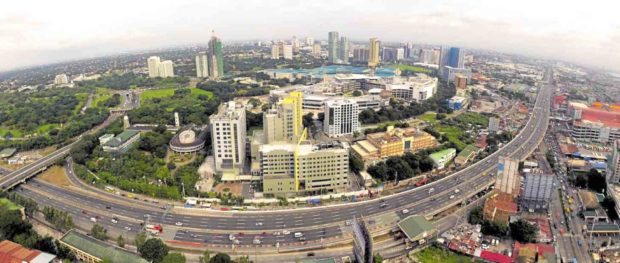How utopic wellness communities are reshaping today’s real estate market

But these wellness-centered utopic communities are, in fact, real. Now, they’re emerging across various parts of the world and giving the real estate industry a dramatic shift.
High-end lives, high-risk living
Over the past centuries, the world has witnessed great advances in engineering, science and technology, only to be faced with the new-age challenge of sedentary living.
As today’s fast-paced world favors driving over biking, sitting over walking, elevator rides over stair hiking, and digital screens over outdoor recreation, our modern living environment has also created new health risks brought about by the lack of physical activity, poor diet, stress, social isolation, and environmental degradation.
Where health and architecture meet
A recent study by the World Health Organization (WHO) cites that 80 percent to 90 percent of one’s health outcomes are directly proportional to where and how they live.
As more people are shifting to healthy and ethical living practices, the heightened awareness led to the advent of health- and wellness-enhancing solutions that can be integrated into their daily lives. However, the potency of these solutions is heavily influenced by the places where people live. This is where the real estate industry comes into play.
Given its role in strengthening the foundation towards healthier and longer lives of its people, the real estate industry gradually skyrocketed its market since the beginning of the 21st century.
Advent of wellness real estate
Wellness real estate emerged in response to this evolution and today, it represents one of the key industries that form the global wellness economy.
A sister to sustainability, yet again another architectural buzzword, wellness real estate focuses on the individual’s experience within the indoor environment. US-based industry trade group Global Wellness Institute (GWI) defines it as the proactive approach on residential design with the residents’ health at the core of its conception, design, construction, and redevelopment.
A multi-billion industry
From multi-family housing, mixed-use projects, masterplanned communities to urban districts, the wellness real estate market encompasses several nascent developments.
According to GWI’s much-cited 2018 study, the wellness estate market currently enjoys a $134-billion revenue, growing at an annual rate of 6.4 percent.
It is expected to top at $180 billion in the next couple of years. At present, over 740 wellness real estate developments are scattered across 34 countries—including those fully built and under construction, and such figures will go nowhere but up in the future.
Building for wellness
Despite the soaring figures that the wellness real estate industry currently enjoys, its power lies in its ability to nurture its residents, both on an individual and communal scale. Such connection requires a clear intention, along with the supporting design and operational principles directed towards mimicking the natural environment where humans are believed to thrive the most.
Physical wellness
This element includes masterplanned communities that promote physical wellness by encouraging its people to engage in physical activities. Such can be manifested through the incorporation of movement-inducing facilities like fitness gyms, walking trails, parks, and playgrounds to its master plan.
Environmental wellness
This element, which is directed towards sustainability and regeneration, focuses on mindful use of materials, design, and construction techniques that impose no harm to the environment.
Social wellness
The provision of communal spaces and amenities facilitates connections with family, friends, neighbors, and people outside their immediate social spheres.
Economic wellness
Where one can accomplish daily activities at work and in school, and is able to shop and enjoy and recreational activities within short distances and with different transportation modes, economic wellness is achieved.
Mental, emotional, and spiritual wellness
Lastly, the wellness real estate industry fosters deep intrapersonal growth through the celebration of beauty, culture, traditions, and an overall feeling of a greater purpose. Such is visually manifested through the incorporation of spaces that promote rest and comfort, encouraging residents to pursue personal hobbies, interests, and spiritual practices.
How Philippine cities can adapt
Given the lack of open spaces, pollution, limited physical activity, and the highly stressful, fast-paced lifestyle, achieving wellness in the country’s concrete urban jungles could pose a serious challenge to city dwellers.
Fortunately, there are local real estate developers who are well aware of this growing need among homebuyers and are, more importantly, addressing it through an innovative and people-centered design approach. Seasoned developers Ayala Land, Eton Properties and Filinvest, for example, are among the corporations integrating health and wellness into the design of their properties.

In terms of walkable and transport-oriented living, the 12-ha mega-complex Eton Centris boasts of multiple retail stores, restaurants, offices, and open spaces with a community anchored in authenticity, passion, and happiness. Its anchor mall, Centris Station, is directly linked to the MRT, extending accessible transport options outside the development itself.
Combining the commerciality of the metro and the serenity of suburban living comes Filinvest, which seeks to create a wealth of retail entertainment options in the depths of the country’s residential hotspots. Further, the company continues to aggressively expand its retail portfolio started by the Festival Supermall and Westgate Center with even newer developments skirting outside the metro.
Health and architecture are coming together in promising ways, and with today’s reign of the wellness real estate industry, the future generation of Filipinos is bound to witness the potential impact of strategic planning and design in fostering connections—both inside and outside one’s development spheres.
The author manages his own architectural and technology studio, which helps local and international clients looking for unique and future design specialties for hotels, condominiums, museums, commercial and mixed-use township developments, with a pursuit for the meta-modern in the next Philippine architecture